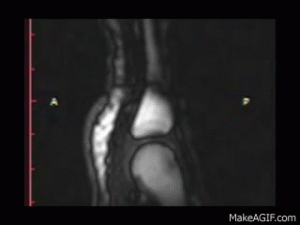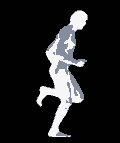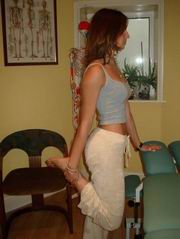The First Ever Video of a Cracking Joint
This article appeared recently in RealClearScience Journal Club by Ross Pomeroy.
For all those Osteopathic patients asking what the popping sound is when manipulating joints.
Scientists based out of the University of Alberta have — for the first time — imaged a joint cracking in real time, effectively putting to rest a decades-long debate in the process. They revealed their success in the journal PLoS ONE.
Doubtless you’ve experienced the physiological wonder that is a cracking knuckle. The audible pop it makes can sometimes be heard across an entire room, making many bystanders wince. But they probably have nothing to cringe about. While joint cracking may sound painful, it’s not associated with any adverse health effects — arthritis, for example.
Everyone knows that bending or stretching a joint is what causes it to crack, but what’s going on under the skin? First off, a joint is where two bones meet. At the ends of each bone is soft, cushioning cartilage. Connecting the cartilage — and thus the bones — is a synovial membrane that’s filled with a thick, lubricating fluid. Bending the joint can cause the membrane to stretch, which in turn causes the pressure inside it to drop and a bubble of dissolved gas to form within the fluid. The whole process is called tribonucleation.

Original article and video link
“It’s a little bit like forming a vacuum,” says Professor Greg Kawchuk, the lead researcher. “As the joint surfaces suddenly separate, there is no more fluid available to fill the increasing joint volume, so a cavity is created…”
For decades, prevailing wisdom has held that the popping noise is tied to these bubbles, but scientists have debated whether the sound is caused by the bubble’s formation or its collapse.
Thanks to Kawchuk and his team, we now know it’s the former. When they watched a volunteer’s knuckles crack inside an MRI machine in real time, the pop clearly occurred when the bubble formed. Moreover, the bubble persisted well after the sound was heard.
“This work provides the first in-vivo demonstration of tribonucleation on a macroscopic scale and as such, provides a new theoretical framework to investigate health outcomes associated with joint cracking,” the researchers say.
Source: Kawchuk GN, Fryer J, Jaremko JL, Zeng H, Rowe L, Thompson R (2015) Real-Time Visualization of Joint Cavitation. PLoS ONE 10(4): e0119470. doi:10.1371/journal.pone.0119470
 Marathon Season is well under way now and the mileage is creeping up. This week-end is Easter and traditionally many runners will be leaving the cushy flat roads around London’s Parks and Commons for the country. It is normally the busiest time here in the clinic for dealing with
Marathon Season is well under way now and the mileage is creeping up. This week-end is Easter and traditionally many runners will be leaving the cushy flat roads around London’s Parks and Commons for the country. It is normally the busiest time here in the clinic for dealing with 

